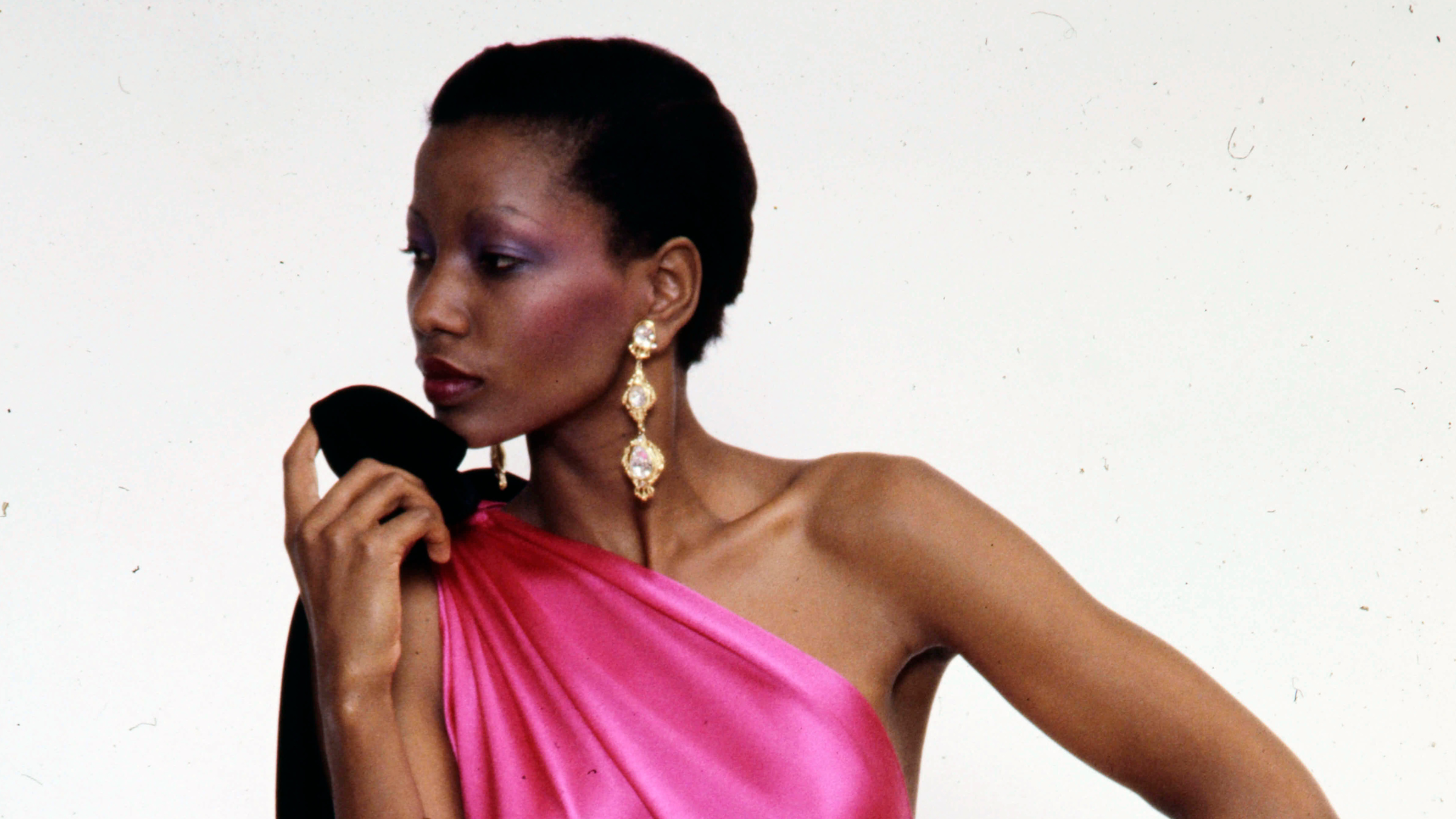
With piercing eyes shaped like landscaped diamonds and a bone structure that looked as if it had been chiseled, Mounia was a perfect pinup girl for Yves Saint Laurent. In 1978 when the designer built his Porgy and Bess-inspired collection around the Martinique-born airline announcer turned Haute Couture catwalker Mounia Orosemane, the world hailed it as one of his most memorable lines of all time. The designer captured the angst of Gershwin’s perspective of Black life in the South. He was reinterpreting it and using Mounia, his first Black muse and friend as the show’s anchor.
His designs which consisted of structured blazers with embellished lapels and dropped waist gowns with flouncing that flirted under the hip “When The Saints Go Marching In” famously took to the speakers. When he pulled the curtain back, there was a rush of applause. The audience screamed his name, and for the first time, they screamed hers too.
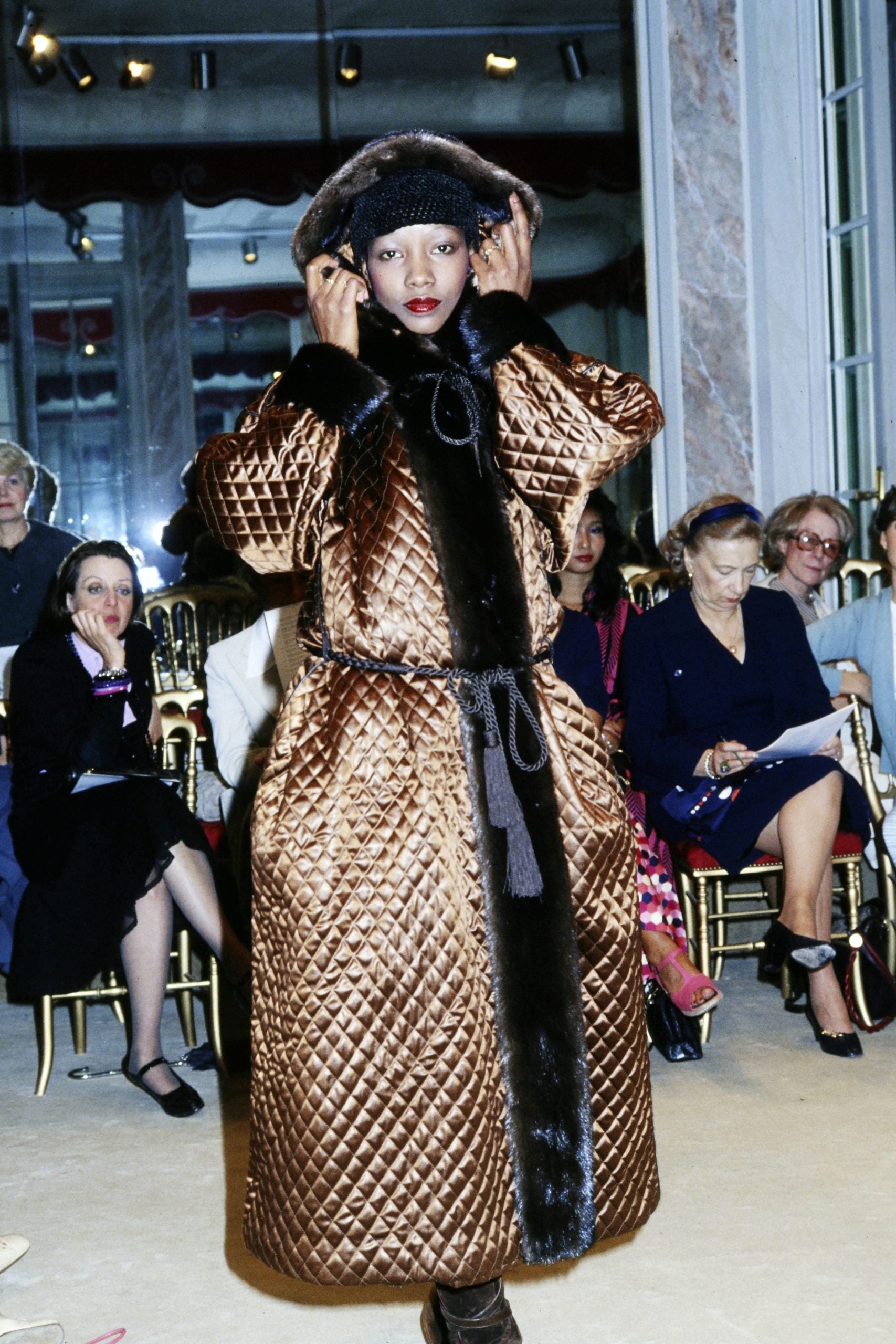
In a previous interview with W magazine, Mounia says the two shared a kiss before coming out together for a final bow. The French press affectionately called the showing, “Broadway.”
Over a call legendary model, Veronica Webb shared: “Was it rare to be a Black model and be a muse for a designer? No. Was it rare to be a Black model and have a collection inspired by you? Yes.” But perhaps it wasn’t a rarity for Saint Laurent, the French couturier, who was born and raised in the North African section of Algiers which he called, “a cosmopolitan place made up of merchants from everywhere and especially somewhere else… a city that sparkled in a multicolored patchwork under the calm North African sun.”
He didn’t move to Paris until he was 17 and wouldn’t take over at Christian Dior as the creative director until he turned 21. His trapeze collection is widely credited with saving the house from financial ruin.
He started his eponymous brand after suing Dior for breach of contract.
Mounia Orosemane was an airport announcer in Martinique when she was discovered by Hubert de Givenchy. According to a profile in Supreme Models: Iconic Black Women Who Revolutionized Fashion, Princess Mounia was swept away to Paris where she became a favorite among the French couturiers—including Karl Lagerfeld, Thierry Mugler, and the Italian designer Gianni Versace. But her relationship with Yves Saint Laurent was special.
Marcellas Reynolds who wrote Supreme Models says Mounia is the gold standard. “You saw her come down the runway and you wanted to know everything. A girl like that, you create worlds around her in your mind,” he explained.
Mounia appeared on 15 magazine covers throughout her career including more than one for ESSENCE. Mounia’s medium changed, but visual expression is still her love language with painting taking up most of her time these days. She’s showing in exhibits throughout France—especially in Paris.
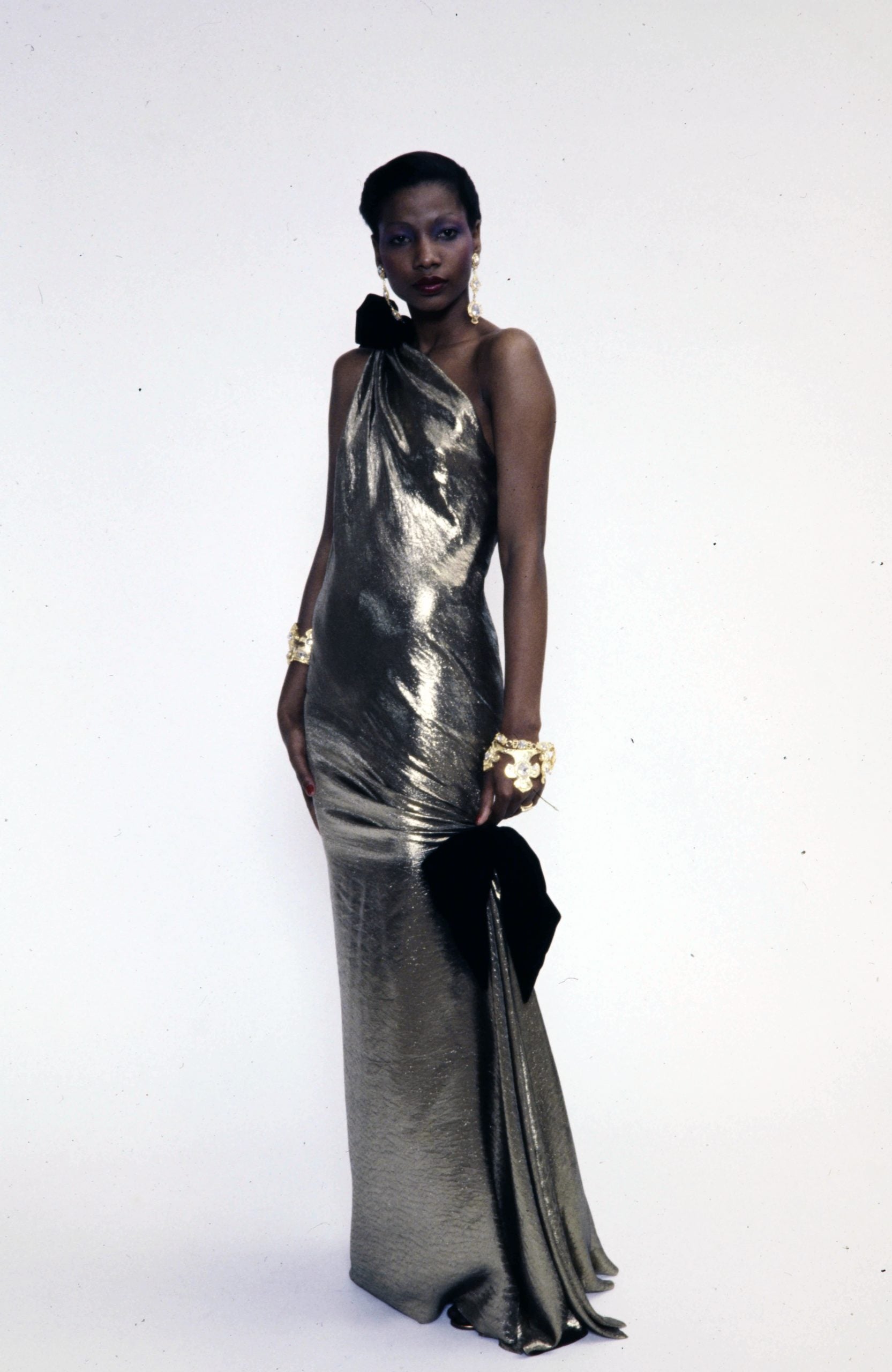
In a 2008 W interview, Mounia credits herself as Mr. Saint Laurent’s first Black muse. “Sometimes I was his confidante, and I would sometimes inspire his creativity. He called me Moumounn.”
“This for me, was history,” Mounia said when speaking of the 1978 collection she feels made her a celebrity, crediting her success in large part, to Yves Saint Laurent. Webb tells me she doesn’t remember where she met Mounia—though she suspects it might have been at a casting for Chanel or Saint Laurent. Most strikingly, she remembers the model’s shape. “She was so elegant and had a quality of being big and little at the same time. She had a tight compact body that was so curvy and beautifully full of muscle,” Webb adds.
The 1978 Porgy and Bess-inspired collection didn’t come as a surprise to Webb, who reminds me that Mr. Saint Laurent was born and raised in Algeria. “Like Josephine Baker,” she said, “He had twin hearts, two loves, Paris, and Africa.”
After being discovered by Hubert de Givenchy, Mounia continued to work, walking on the French runways throughout the 1970s and 1980s, but her presence helped open doors for the print girls—including in America.
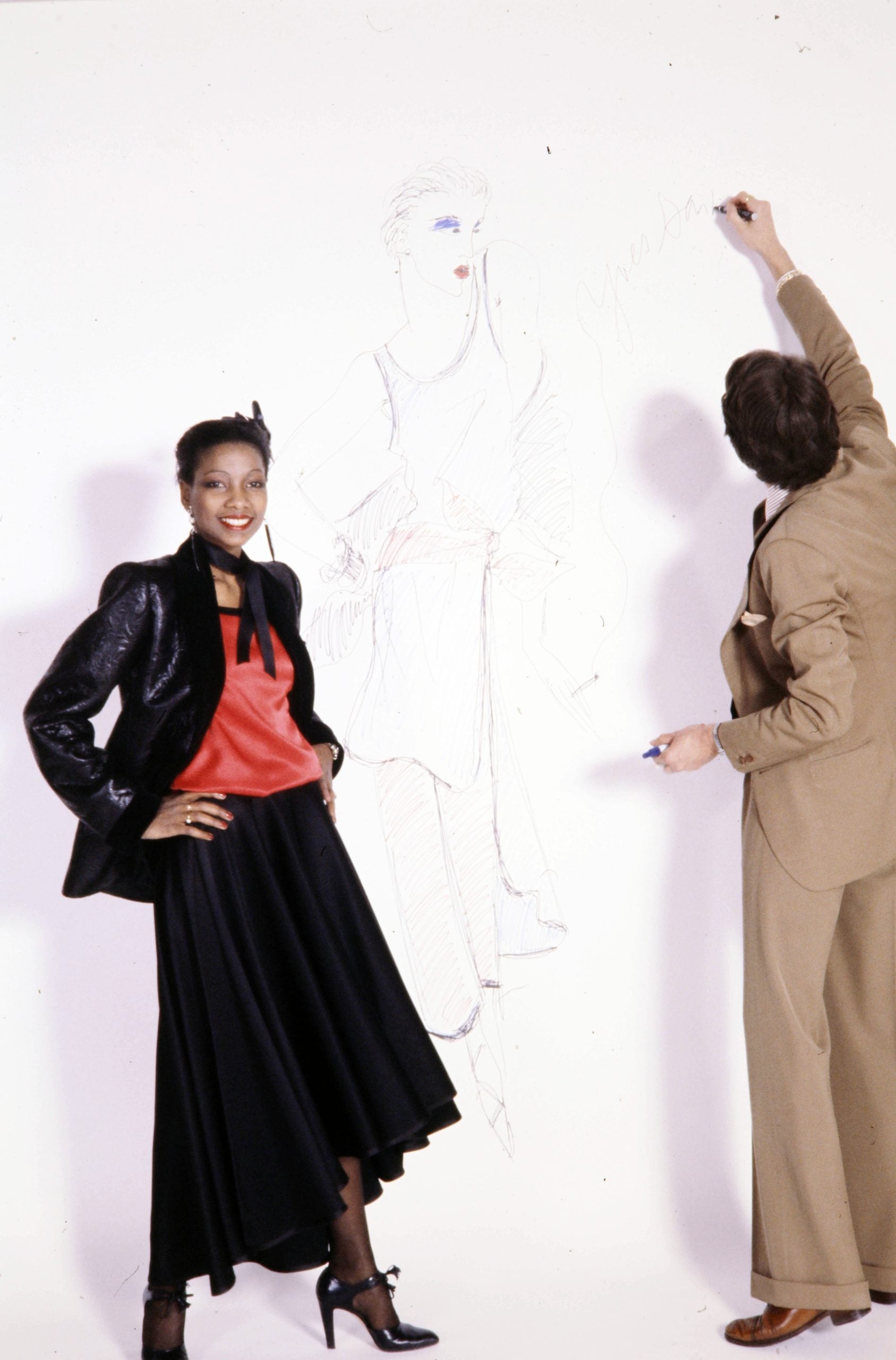
Beverly Johnson is one such model. Johnson is the first Black model to appear on the cover of American Vogue is starring in a new WETV series, “The Barnes Bunch,” where she’ll be occasionally on grandma duties. At the height of her career as the It Girl of the 1970s, she remembers advocating to break into the European market—specifically on the runway (Donyale Luna is the first Black model to appear on the cover of British Vogue in 1966).
Johnson said Mounia was a major reason why she wanted to pursue the market. “Mounia was unbelievable,” Johnson said over a Zoom call. “When they finally let me do shows, she was their muse. I got to know her, and she was an incredible woman. And they asked people like her, do you like this, do you like that?” Johnson notes that Mounia was an essential part of the designers’ lives.
The Battle of Versailles, beautifully immortalized by Washington Post senior critic-at-large Robin Givhan in her retelling of the monumental fashion moment wasn’t the first time French runways welcomed Black girls. Despite this, it should be noted, that there were consequences for being groundbreaking—then, and now (Givhan’s book on the iconic moment is entitled The Battle of Versailles: The Night American Fashion Stumbled into the Spotlight and Made History).
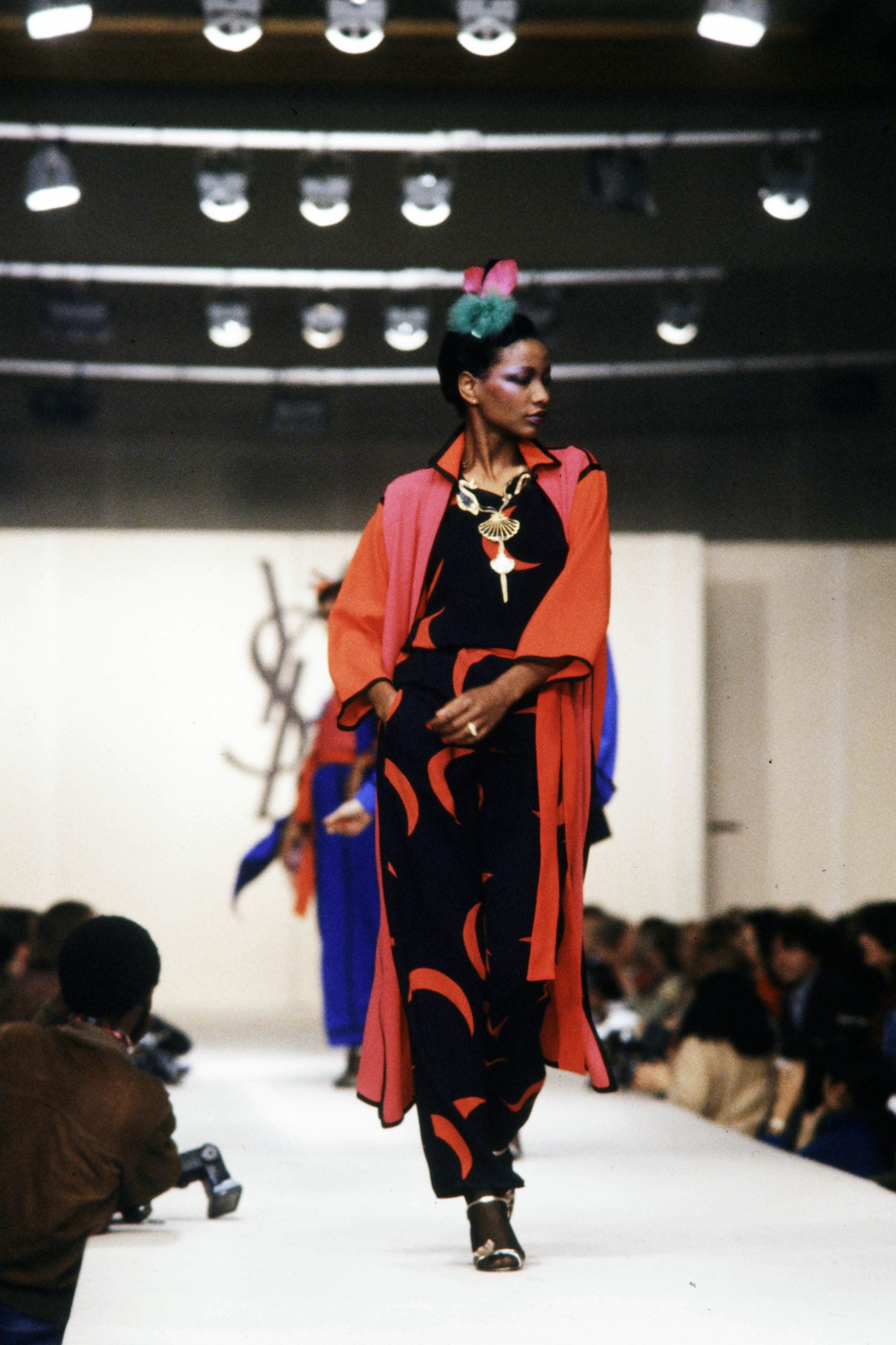
In Skin Deep by Barbara Summers, she quotes designer Paco Rabanne who recalled a moment in Paris in 1964 after using Black models on the runway, “I watched them coming,” he said. “The girls from American Vogue and Harper’s Bazaar ‘Why did you do that?’ they said. ‘You don’t have the right to do that, to take those kinds of girls. Fashion is for us, while people.’ They spat in my face. I had to wipe if off.”
Reynolds tells me he doesn’t think it was ever easy for Black models to break through. He noted that there was an idea of fetishizing the Black model. “There had to be some mythology around them for them to make it to the next level,” he adds.
In a tribute to Yves Saint Laurent after his untimely passing, Naomi Campbell recalled an opportunity the two connected on which would land her on the cover of French Vogue. It was her first Vogue cover and at the time, Campbell recalls telling Saint Laurent that she didn’t think that it could happen for her, a Black model. Still, he advocated for her. She got the cover and as she told Hollywood, he’d always advocated for Black models.
There’s a shift past the days when designers would advocate for models. Reynolds said it is because there’s no more reverence. He says the Black designer Sergio Hudson is one amongst a small number of creatives who still favor models rather than actresses.
“I remember doing shows, and there would be 15 Black girls out of the 40 girls in the shows,” Webb recalls. “It was like that then because designers showed 120 outfits. There wasn’t TV and internet. People came from all over the world.”
Yves Saint Laurent’s relationship with the iconic Mounia was one of designer and muse—but it was only one of many times that the designer pulled inspiration from Black beauty. His upbringing in Algiers gave him a perspective that made him uniquely separate from his contemporaries and forced him to look outside of what Paris sensibilities defined as the beauty standard. Saint Laurent’s origins and his success as an innovative creator gave him the platform to redefine what that standard was—Mounia was somewhat a guiding light and muse simultaneously.
